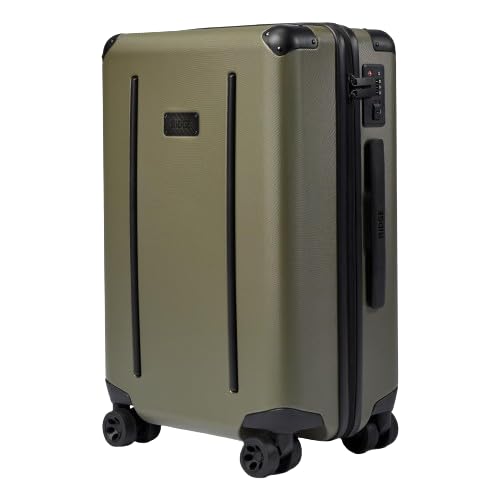Storing electronic nicotine delivery systems in hand baggage is permissible, within specific parameters. Most airlines and international regulations allow carrying these devices in the cabin, provided certain safety standards are met. Batteries must not exceed 100 watt-hours, and it’s advisable to keep them in the original packaging or protective cases to prevent accidental activation.
Refillable tanks or cartridges containing e-liquids are also acceptable, although restrictions apply to the volume of liquid. Typically, a maximum of 100 milliliters per container is allowed, and all liquids must fit within a single quart-sized bag, following the common liquid restrictions of air travel.
Be sure to check individual airline policies as regulations may vary. Some carriers might impose additional rules regarding the transportation of these items. Understanding these guidelines can ensure a hassle-free experience at security checkpoints.
Transporting E-Cigarettes in Cabin Bags
Yes, e-cigarettes are permitted in hand baggage. Ensure devices are turned off during travel.
Battery Regulations
Battery safety is paramount. Lithium-ion batteries must be secured against short circuits. Avoid transporting spare batteries in checked bags; they belong in the cabin. It’s advisable to use protective cases for individual cells.
Liquids and Refills
For liquid refills, adhere to the liquid restrictions–generally, containers should not exceed 3.4 ounces (100 ml) and must fit within a quart-sized bag. Check the limits specified by your airline.
Verify airline-specific rules prior to departure. Regulations may differ between carriers and regions. Following these guidelines minimizes complications during security checks.
Understanding Airline Regulations for Vapes
Airlines typically allow electronic smoking devices in cabin compartments, but restrictions exist. Every carrier has specific policies, and these should be reviewed before departure. Check the airline’s website or contact customer service for the latest regulations.
Devices must be stored properly during the flight. Usually, they are to remain in personal items and not placed in checked bags. If bringing spare batteries, ensure they are in their original packaging or individually protected to prevent contact with metal objects.
Liquid refills may have volume limitations. Generally, liquids need to adhere to the 3.4-ounce (100ml) rule. Ensure that these containers fit in a quart-sized, clear, resealable bag. Each passenger is typically limited to one such bag.
Be aware of restrictions at international destinations, as regulations vary significantly across countries. Some places may have bans on usage or importation of electronic cigarettes. Research local laws to avoid penalties upon arrival.
Always be prepared for security checks. Expect to remove devices and liquids from bags for screening. Follow staff instructions during security and boarding processes to ensure a smooth experience.
Specific Requirements for Vape Batteries in Carry-On Bags
Li-ion batteries must be securely stowed in personal items or cabin facilities. Each battery should not exceed 100 watt-hours (Wh). For batteries between 100 Wh and 160 Wh, airlines typically allow a maximum of two per passenger, subject to airline approval. Keep spare batteries in their original packaging or use protective cases to prevent short-circuiting.
Regulations by Airline
Different airlines may implement unique regulations concerning vape batteries. Always check airline-specific guidelines before traveling. Airlines like Delta and American Airlines may have stricter rules compared to others, potentially impacting battery acceptance.
Emergency Procedures
In case of an incident involving a battery, follow airline safety protocols. Be aware of emergency contact points in the cabin for immediate assistance. Reporting any signs of damage or swelling in batteries is crucial.
For essentials on travel gear, consider the best auto open umbrella factories or the best multi day hiking backpack for safe and convenient transport of personal items.
Tips for Packing Your Vape Safely
Prioritize placing your vaping device in an easily accessible location within your bag. This allows for quick retrieval during security screening. Use a padded case or protective sleeve to prevent damage during transit.
Ensure that the tank is emptied of e-liquid to avoid potential leaks. Store liquid bottles separately in clear, resealable bags if allowed by airline restrictions. Check bottle sizes to comply with liquid regulations.
Disconnect the battery from the device to minimize the risk of accidental activation. Transport batteries in a protective case or cover to avoid short circuits. Always carry spare batteries in their original packaging or in designated battery holders.
Familiarize yourself with your airline’s specific policies regarding vape-related items before setting out. Some carriers have unique rules that may not be widely known.
Consider bringing a travel-sized charger or portable power bank, ensuring they meet airline specifications. Observe all guidelines related to electronics in checked bags to enhance safety and compliance.
For additional insights on maintaining your equipment, explore resources like the best cordless lawn mower for stripes uk which covers various tools that could enhance outdoor maintenance while complementing your on-the-go lifestyle.
International Travel Considerations for Vapes
Research regulations specific to each destination. Many countries have varying laws regarding the use and import of electronic cigarettes and related products. Understanding local customs can prevent legal complications.
Age Restrictions
Check age limitations imposed by different nations. Some jurisdictions require users to be of a certain age to possess or use vaping products, while others may prohibit sales altogether.
Prohibited Ingredients
Familiarize yourself with banned substances. Certain flavors or components commonly found in nicotine liquids may be restricted or outlawed in various regions. Ensure compliance to avoid confiscation or penalties.
Traveling with E-liquids
- Adhere to liquid restrictions imposed by airlines.
- Store e-liquids in containers of 3.4 ounces (100ml) or smaller.
- Place all liquids in a quart-sized, clear, resealable plastic bag as per TSA rules.
Duty-Free Regulations
Understand limits on the import of vaping products at duty-free stores. Exceeding these limits may incur tariffs or confiscation.
Device Security
- Prepare devices for screening at security checkpoints.
- Remove batteries if possible to prevent accidental activation during transit.
Awareness of local laws, including fines or penalties for non-compliance, is advisable. Being informed reduces risks and ensures a smoother travel experience.








